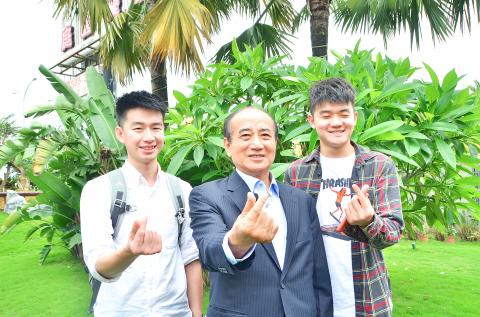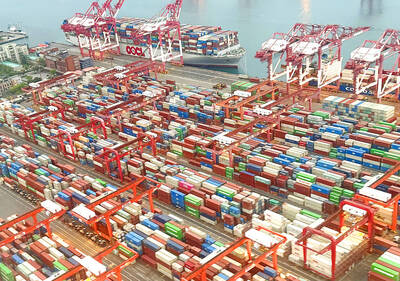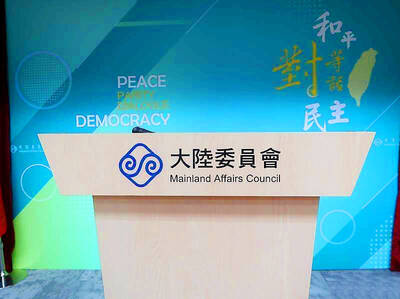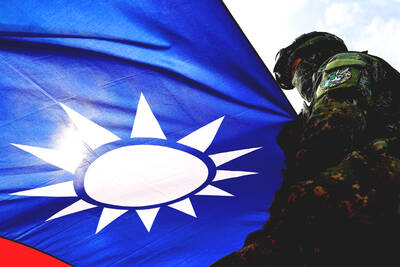Chinese Nationalist Party (KMT) Legislator-at-large Wang Jin-pyng (王金平) on Friday said that if elected president, he would launch negotiations between the government and opposition parties to coin a new term to replace the so-called “1992 consensus.”
“People in the KMT and those in the pan-blue and pan-green camps are in disagreement over the term’s definition,” Wang said.
“The DPP [Democratic Progressive Party] claims that it is synonymous with ‘one country, two systems,’ which is likely not convincing,” he said.

Photo: Wu Chun-feng, Taipei Times
The KMT and China each have their own interpretation of the term, with some KMT members advocating “one China, different interpretations” and Beijing touting “one China, same interpretation.”
“Any definition that involves ‘interpretation’ is not the answer,” said Wang, who announced his bid to run for president in March.
With the term sparking divisions domestically and across the Taiwan Strait, he would hold negotiations between the ruling party and opposition parties to discuss whether to replace the “consensus” with a new term, while leaving open the option to “keep using it,” he said.
Meanwhile, former president Ma Ying-jeou (馬英九) and former New Taipei City mayor Eric Chu (朱立倫) said that “one China” could only mean the Republic of China (ROC).
Hon Hai Precision Industry Co (鴻海精密) chairman Terry Gou (郭台銘), another KMT presidential hopeful, during an interview with CommonWealth Magazine said that he would never only say “1992 consensus,” but rather “1992 consensus and ‘one China, different interpretations.’”
“For the Zhonghua minzu [ethnic Chinese, 中華民族], there is one ROC and one People’s Republic of China,” Gou said.
Ma said that he took Gou to mean that the “one China” in “one China, different interpretations” refers to the ROC.
Chu, who in December last year announced that he would join the KMT’s presidential primary, urged all KMT members to heed the “consensus” as defined in the party’s “peace platform” as well as its “historical context.”
It is the KMT’s unwavering stance that “one China” refers to the ROC, he said.
Commenting on Gou’s remarks, National Taiwan Normal University professor of political science Fan Shih-ping (范世平) said that Gou’s latest cross-strait stance was not different from that espoused in the DPP’s Resolution on Taiwan’s Future or the “special state-to-state relationship” theory of former president Lee Teng-hui (李登輝).
China’s silence on Gou’s remarks could mean one of two things, he said.
One, it has been too preoccupied to respond, Fan said.
Two — which would be “alarming” — Gou has gained Beijing’s consent before making the remark, which would mean that the two sides had conspired together to formulate a plot to win the support of swing voters or borderline DPP supporters, he said.
The “1992 consensus — ” a term former Mainland Affairs Council chairman Su Chi (蘇起) in 2006 admitted that he made up in 2000 — refers to a tacit understanding between the KMT and the Chinese government that there is “one China,” with each side having its own interpretation of what “China” means.
Additional reporting by Hsiao Fang-chi

MORE VISITORS: The Tourism Administration said that it is seeing positive prospects in its efforts to expand the tourism market in North America and Europe Taiwan has been ranked as the cheapest place in the world to travel to this year, based on a list recommended by NerdWallet. The San Francisco-based personal finance company said that Taiwan topped the list of 16 nations it chose for budget travelers because US tourists do not need visas and travelers can easily have a good meal for less than US$10. A bus ride in Taipei costs just under US$0.50, while subway rides start at US$0.60, the firm said, adding that public transportation in Taiwan is easy to navigate. The firm also called Taiwan a “food lover’s paradise,” citing inexpensive breakfast stalls

TRADE: A mandatory declaration of origin for manufactured goods bound for the US is to take effect on May 7 to block China from exploiting Taiwan’s trade channels All products manufactured in Taiwan and exported to the US must include a signed declaration of origin starting on May 7, the Bureau of Foreign Trade announced yesterday. US President Donald Trump on April 2 imposed a 32 percent tariff on imports from Taiwan, but one week later announced a 90-day pause on its implementation. However, a universal 10 percent tariff was immediately applied to most imports from around the world. On April 12, the Trump administration further exempted computers, smartphones and semiconductors from the new tariffs. In response, President William Lai’s (賴清德) administration has introduced a series of countermeasures to support affected

CROSS-STRAIT: The vast majority of Taiwanese support maintaining the ‘status quo,’ while concern is rising about Beijing’s influence operations More than eight out of 10 Taiwanese reject Beijing’s “one country, two systems” framework for cross-strait relations, according to a survey released by the Mainland Affairs Council (MAC) on Thursday. The MAC’s latest quarterly survey found that 84.4 percent of respondents opposed Beijing’s “one country, two systems” formula for handling cross-strait relations — a figure consistent with past polling. Over the past three years, opposition to the framework has remained high, ranging from a low of 83.6 percent in April 2023 to a peak of 89.6 percent in April last year. In the most recent poll, 82.5 percent also rejected China’s

PLUGGING HOLES: The amendments would bring the legislation in line with systems found in other countries such as Japan and the US, Legislator Chen Kuan-ting said Democratic Progressive Party (DPP) Legislator Chen Kuan-ting (陳冠廷) has proposed amending national security legislation amid a spate of espionage cases. Potential gaps in security vetting procedures for personnel with access to sensitive information prompted him to propose the amendments, which would introduce changes to Article 14 of the Classified National Security Information Protection Act (國家機密保護法), Chen said yesterday. The proposal, which aims to enhance interagency vetting procedures and reduce the risk of classified information leaks, would establish a comprehensive security clearance system in Taiwan, he said. The amendment would require character and loyalty checks for civil servants and intelligence personnel prior to